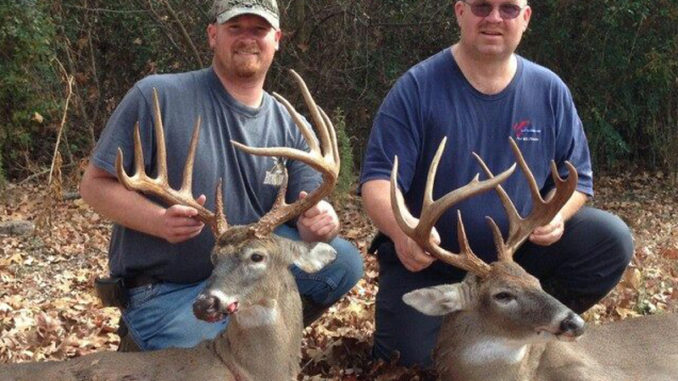
Slightly more than 25 years ago, Don Elam and a dozen of his buddies formed a small hunting club in the rolling hills of Moore County, N.C. From a few hundred acres from the beginning to nearly 8,000 acres today — and more than 120 members — Buck Mountain Hunting Club is one of the preferred hunting retreats across the region to bag any one of the available big- or small-game species, including wild turkey, deer, squirrel and even one of the infamous wild hogs that have recently showed up in the Piedmont region of North Carolina.
Most of Buck Mountain’s club lands are owned by the forest industry, with roughly 85 percent under pine-timber production and around 15 percent in hardwood — but there is definitely no shortage of habitat.
From early successional habitat after recent clear-cuts to dense, 20-year-old pine plantations, Buck Mountain’s club lands provide ample bedding and escape cover as well as feeding and loafing habitats for a wide range of critters.
In addition to natural food sources, club members have the opportunity to plant their own food plots at any of their stand sites. Since members are cannot cut down any trees, food plots must be established in areas with large openings. Buck Mountain’s members plant a variety of wildlife foods, from chicory and winter grains to turnips and clovers that provide a nutritious food source during the time of need.
Buck Mountain strives to produce quality deer for its members by adjusting the number of animals killed over size or antler restrictions. State regulations allow hunters to kill up to four bucks each, but club rules restricts them to two per member. While it may not protect the young class of bucks from harvest, it almost guarantees that a substantial number of animals make it to get another year closer to maturity.
According to member Wesley Kimbrell, the relaxed rules are still bringing some big ones to the skinning shed.
“We are not a trophy club, the club tends to yield three to four bucks over 130 inches each year,” he said. “We also offer a big buck and big doe pot to try to give hunters an incentive to let the younger deer walk, with a prize high enough to pay the next year’s club dues.”
In March, Buck Mountain will see plenty of activity across club lands. Members will be preparing the ground for warm-season food plots, patterning loads for turkey season, putting out mineral blocks and even cutting down on the coyote population during their denning/brooding period.
Club members are aware that hunters are not the only predators targeting deer. Some hunters use March to kill as many coyotes as possible before the fawning season begins over the next couple of months.
“With the correct predator control, we feel that we can provide enough habitats for a healthy deer herd to thrive,” Kimbrell said.




Be the first to comment